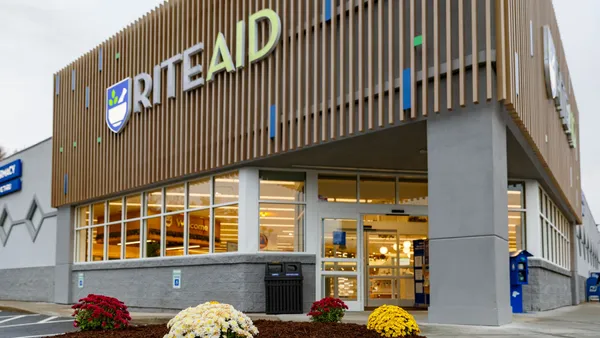Dive Brief:
-
Customers visiting inventory-free showrooms spend up to 60% more on average, shop more often, buy from more categories and buy more expensive items, according to research from Idea Farm Ventures, The Wharton School and Harvard Business School.
-
Those customers are also less likely to return items in general, and are notably "less likely to return more expensive items," the study found. The overall return rate among showroom shoppers drops 5 percentage points, according to the paper.
-
The researchers, Idea Farm's David Bell, Wharton's Santiago Gallino and Harvard's Antonio Moreno, worked with an unnamed digitally native vertical brand specializing in men's apparel in order to assess the value of a retail location that fosters e-commerce with try-before-buy opportunities.
Dive Insight:
It's becoming clear to digital natives and legacy retailers alike how valuable stores are in forging connections with customers and solving pain points like evaluating the quality, fit and feel of merchandise, and returns. Less clear are the merits of running a store without inventory.
This team dug deep into that question, and determined that, in their words, a zero-inventory store "supercharges" customers. The format not only smooths over pain points for shoppers, but also presents a brand with rich information about its customers that can only be gleaned from personal interactions, the paper said. Among other assessments, the team evaluated the behavior of 255,792 customers, 127,896 who visited an inventory-free location plus "the best match for each" who did not.
The model has been embraced by digital native brands interested in maintaining fulfillment through an e-commerce oriented supply chain while adding the marketing benefits that can only come from running a physical store. But legacy retailers are also exploring the notion. Most prominently, Nordstrom is in the midst of expanding its inventory-free "Local" concept, which is set up to ease returns but also offers styling and tailoring services. The department store most recently opened two such locations in New York City after piloting them in Los Angeles.
A lot of what the researchers found, however, is true of any well-run store. Their focus is on "a small footprint, experience-centric retail location," as opposed to, presumably, a store with sub-par customer service or merchandising. And their argument that inventory-free stores might be preferable to traditional stores that carry inventory, especially for smaller pure-play e-commerce brands, is that stocked stores are more expensive to run.
Regardless, they are more profitable, according to Shlomo Chopp, founder and CEO of ShopFulfill, a retail infrastructure concept that integrates physical and digital operations, who said the optimal retailer is a combination of inventory-full stores and e-commerce. "Why give up on stocking stores when legacy retailers find the majority of their profits there?" he told Retail Dive in an interview. "Nobody makes money on e-commerce. The store has the capability to pay back your investment in spades. Digital native brands that do not put stock in the store are waving the white flag before they start. I think the reason why they open no-stock stores is because they don't have a way to properly distribute from the store through their e-commerce network."
The researchers do admit that some customers would rather walk out of the store with their purchases than wait for an online order to arrive, and that failing to offer that risks sales. And some legacy retailers, including Target, have said that leveraging stores for online fulfillment has worked in the other direction — enabling them to cut their costs of e-commerce distribution.
"An interesting finding of the paper was that … there were a lot of customers who were willing to go to a showroom knowing that they were not going to be able to take home their product that day," Gallino told Wharton's Knowledge@Wharton blog. "To me, that was surprising. At the same time, this doesn't negate the fact that some customers are not happy with that setting. And so I think it's a managerial call of choosing which problem you want to live with."














